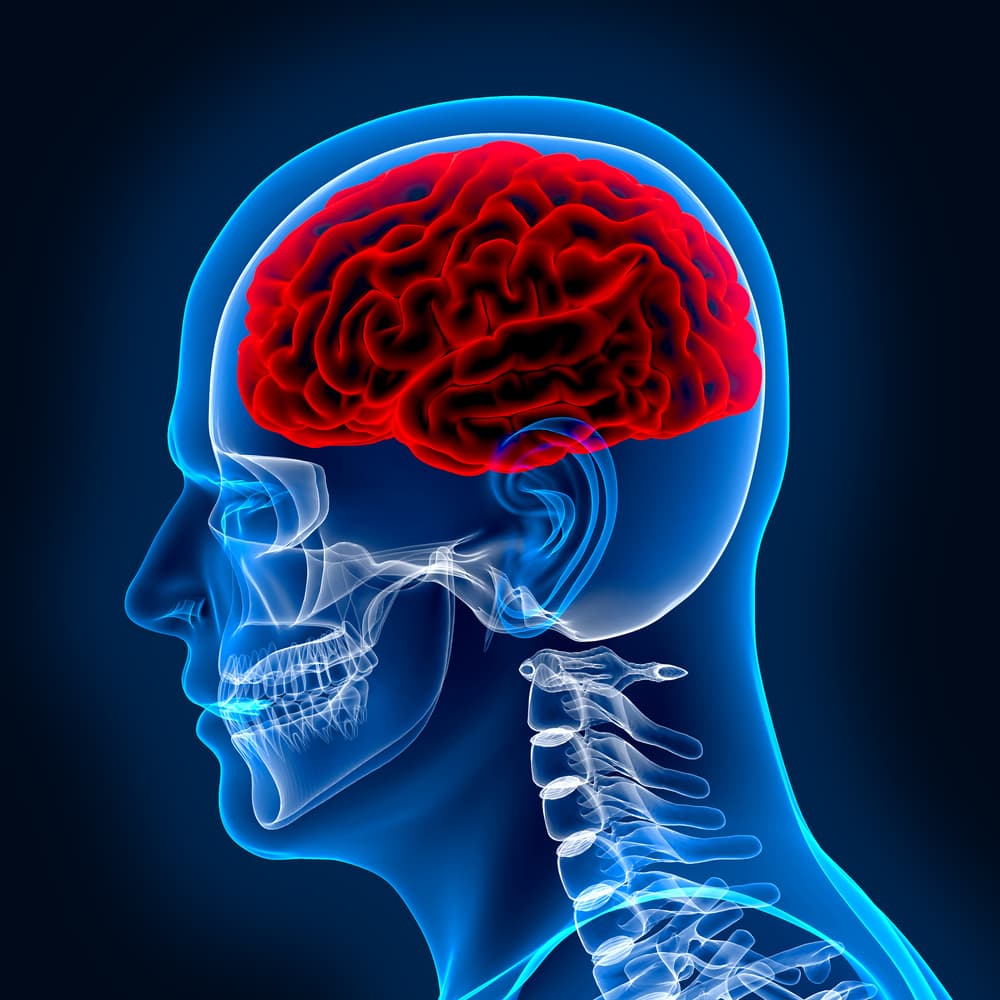Brain bleeds and other serious head injuries can occur in a car accident when a driver or passenger strikes their head on a hard surface inside the vehicle, such as the window, headrest, or steering wheel.
Brain bleeds can result in serious medical complications, some of which may be permanent (or even fatal). Therefore, you need to obtain medical treatment as quickly as possible after your car accident. Additionally, you should contact a San Diego car accident lawyer right away about your case.
A San Diego car accident attorney can handle every step of the legal process while you attend medical appointments and focus your attention on getting better. Your attorney can also negotiate with the at-fault driver’s insurance company on your behalf or pursue litigation in the court system for the damages you deserve.
Schedule A Free Case Evaluation Today!
Types of San Diego Car Crashes that Can Lead to a Brain Bleed

In San Diego, car crashes can vary in severity, and some types of accidents have a higher risk of causing a brain bleed, a common result of a traumatic brain injury (TBI).
These brain injuries can result from the force of impact and sudden movement during a collision, causing damage to the brain tissue and blood vessels.
Some types of car crashes that may increase the risk of a brain bleed include:
- High-Speed Collisions – Crashes involving high speeds can cause significant force upon impact, leading to severe injuries, including traumatic brain injuries. The rapid deceleration and sudden change in velocity can result in the brain striking against the skull, causing bruising, bleeding, or tearing of brain tissue.
- Vehicle Rollover Accidents – Rollover accidents involve a vehicle overturning onto its side or roof, often due to factors such as high speeds, sharp turns, or collisions with other vehicles or obstacles. The violent motion of a rollover can subject occupants to extreme forces and increase the likelihood of head injuries, including brain bleeds, as the victim’s head may strike against the vehicle interior.
- T-Bone Collisions – T-bone collisions, also known as side-impact or broadside collisions, occur when one vehicle strikes another vehicle from the side. These crashes can be particularly dangerous as they often result in a direct impact on the passenger compartment, where occupants are more vulnerable to head injuries from the lack of protective space between the vehicle and the occupants.
- Head-On Collisions – Head-on collisions involve the front end of one vehicle striking the front end of another vehicle. These crashes can be especially severe and are more likely to result in traumatic brain injuries due to the significant forces involved. The abrupt deceleration and impact can cause the victim’s brain to collide with their skull, leading to brain bleeds and other serious injuries.
- Multiple-Vehicle Pile-ups – Multi-vehicle pile-ups involve numerous vehicles colliding with each other in a chain reaction, often on highways or freeways with high traffic volumes. The chaotic nature of these accidents increases the risk of severe injuries, including traumatic brain injuries, as occupants may sustain multiple impacts from different directions.
- Pedestrian or Bicycle Accidents – Pedestrians and bicyclists are particularly vulnerable to traumatic brain injuries in car accidents, as they lack the protection of a vehicle’s frame and safety features. In collisions involving pedestrians or cyclists, the impact of the vehicle can directly strike the head, leading to severe head injuries such as brain bleeds.
These types of car crashes can result in traumatic brain injuries, including brain bleeds, which require immediate medical attention and can have long-term consequences for the victim’s health and well-being.
Prompt medical treatment and legal assistance following a car accident can ensure proper diagnosis, treatment, and compensation for the injuries and damages suffered.
Symptoms of a Brain Bleed and Necessary Medical Treatment
Following a car accident resulting from another driver’s negligence, a brain bleed can bring about various symptoms that require immediate medical attention. Recognizing these symptoms and seeking prompt medical treatment is crucial for ensuring the best possible outcome.
Some common symptoms of a brain bleed following a car accident include:
- Headache – A severe or persistent headache, especially if it worsens over time, can indicate a brain bleed. This symptom may be accompanied by nausea or vomiting.
- Loss of Consciousness – Loss of consciousness, even briefly, is a concerning sign of a traumatic brain injury. If an individual loses consciousness following a car accident, they should seek immediate medical attention.
- Confusion or Disorientation – Confusion, disorientation, or difficulty concentrating are common symptoms of a brain bleed. The individual may have trouble remembering details of the accident or may appear dazed and unaware of their surroundings.
- Weakness or Numbness – Weakness, numbness, or tingling sensations in the arms, legs, or face can indicate neurological damage and should be evaluated by a medical professional.
- Vision Changes – Blurred vision, double vision, or other changes in vision can occur as a result of a brain bleed. These symptoms may be accompanied by sensitivity to light or difficulty focusing.
- Seizures – Seizures, characterized by uncontrollable shaking or convulsions, may occur following a traumatic brain injury. If an individual experiences a seizure after a car accident, they should receive immediate medical attention.
- Dizziness or Balance Problems – Dizziness, vertigo, or difficulty maintaining balance may indicate damage to the brain’s balance centers and should be evaluated by a doctor.
- Changes in Behavior or Mood – Following a brain injury, individuals may experience changes in behavior or mood, such as irritability, agitation, depression, or anxiety.
- Slurred Speech – Slurred speech or difficulty speaking clearly can occur because of damage to the brain’s language centers.
If any of these symptoms are present following a car accident, it is essential to seek immediate medical attention. Diagnosis and treatment of a brain bleed typically involve a combination of imaging tests, such as CT scans or MRI scans, to assess the extent of the injury.
Depending upon the severity of the brain bleed, treatment may include medication, surgery to relieve pressure on the brain, rehabilitation therapy, and ongoing monitoring to manage symptoms and prevent further complications.
Successfully Proving a Brain Bleed in a Car Accident Case

Legally proving a brain bleed in a car accident case resulting from another driver’s negligence requires gathering evidence to demonstrate the causal link between the accident and the injury.
Proving a brain bleed involves establishing the following key elements:
- Documentation of the Accident – The first step to proving a brain bleed in a car accident case is documenting the details of the accident. This may include obtaining a copy of the police report, gathering witness statements, and collecting photographs or videos of the accident scene and vehicles involved.
- Medical Records – Medical records play a crucial role in proving a brain bleed. These records should document the victim’s initial evaluation and treatment following the accident, including any diagnostic tests such as CT scans or MRI scans that were performed to diagnose the brain bleed. Follow-up medical appointments, treatments, and prognosis should also be documented.
- Expert Medical Testimony – Expert medical testimony from qualified healthcare professionals, such as neurologists or neurosurgeons, can provide valuable insight into the nature and severity of the brain bleed. These experts can testify about the causal relationship between the accident and the brain injury, the extent of the injury, and the victim’s prognosis for recovery.
- Causation Evidence – Proving causation involves establishing that the brain bleed directly resulted from the car accident – and not from any other pre-existing conditions or subsequent events. This may require medical evidence linking the timing and nature of the accident to the onset of symptoms and the brain bleed diagnosis.
- Witness Testimony – Eyewitness testimony from individuals who observed the accident or interacted with the victim following the accident can help to establish the severity of the collision and the resulting injuries. Witnesses may provide accounts of the victim’s behavior, symptoms, and medical condition immediately after the accident, which can support the claim for damages.
- Financial Documentation – Financial documentation, such as medical bills, receipts for treatment and rehabilitation expenses, and records of lost income, can help quantify the economic damages associated with the brain bleed. These documents provide evidence of the financial losses incurred as a result of the accident and injury.
- Demonstration of Negligence – Finally, to hold the at-fault driver liable for the brain bleed, it is necessary to demonstrate that their negligence directly caused the accident. This may involve proving that the driver violated traffic laws, engaged in reckless behavior, or failed to exercise reasonable care while operating their vehicle, leading to the collision and resulting injuries.
By presenting compelling evidence that establishes each of these elements, victims of car accidents can strengthen their case and increase their chances of obtaining fair compensation for a brain bleed and related damages.
Recovering Compensation for a Brain Bleed in a Car Crash

Accident victims who suffer a brain bleed in a car crash due to someone else’s negligence may recover compensation to cover their damages. This compensation addresses both the financial and non-financial hardships that the victim experienced due to their injury.
Here are examples of compensation available for a brain bleed in a car crash:
- Related Medical Expenses – Accident victims can recover compensation for all medical expenses related to the brain bleed, including emergency room visits, hospital stays, surgeries, doctor appointments, diagnostic tests (such as CT scans or MRIs), medications, rehabilitation, therapy, and assistive devices. This compensation covers both past and future medical costs associated with treating the brain injury.
- Lost Earnings – Accident victims may be entitled to compensation for any income lost as a result of the brain injury. This includes compensation for missed work days, reduced work hours, or the inability to return to work temporarily or permanently due to the brain bleed. Lost earnings compensation aims to reimburse the victim for the financial effect of their inability to work while recovering from the injury.
- Pain and Suffering – Pain and suffering compensation is intended to compensate accident victims for the physical pain, discomfort, and emotional distress resulting from the brain bleed and its effects on their daily lives. This type of compensation accounts for the subjective experience of pain and suffering that the victim endured because of the injury and its consequences.
- Emotional Distress – In addition to pain and suffering, accident victims may be entitled to compensation for emotional distress resulting from the brain bleed. This includes compensation for psychological trauma, anxiety, depression, fear, and other emotional hardships.
- Loss of Enjoyment of Life – Accident victims may also receive compensation for their loss of life enjoyment resulting from the brain injury. This type of compensation acknowledges the limitations and restrictions imposed on the victim’s ability to engage in activities, hobbies, and social interactions that they enjoyed before the accident.
- Loss of Consortium – Spouses or family members of accident victims may be entitled to recover compensation for loss of consortium, which refers to the loss of companionship, affection, and support resulting from the victim’s brain injury. This compensation addresses the effects of a brain injury on the victim’s relationships and family dynamics.
- Punitive Damages – In cases involving egregious or reckless conduct by the at-fault party, accident victims may receive punitive damages in addition to compensatory damages. Punitive damages punish the at-fault driver for their severe misconduct and deter similar behavior.
This compensation provides accident victims with the financial resources they need to recover from a brain bleed in a car crash – and rebuild their lives after the injury. By pursuing fair compensation through a personal injury claim or lawsuit, victims can obtain the support and resources necessary to cope with the physical, emotional, and financial challenges of their injury.
Contact a San Diego Car Accident Lawyer Today
Serious car crashes in San Diego can lead to brain bleeds and other debilitating head injuries. If you or a person you love suffered a head injury in a recent motor vehicle accident, you need to have skilled legal representation in your corner at every stage of the proceedings.
A knowledgeable San Diego personal injury attorney can handle every step of the legal process for you, including settlement negotiations and litigation proceedings, in pursuit of the favorable monetary award you deserve for your injury.

